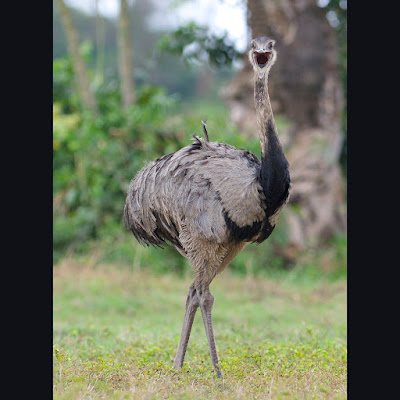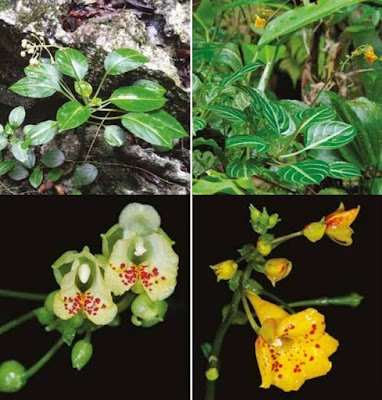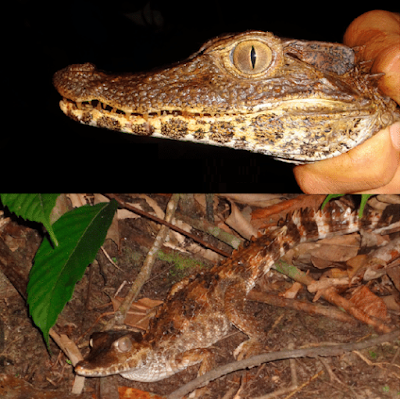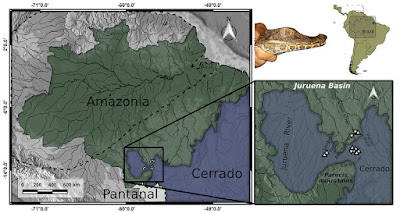[Most Recent Entries] [Calendar View]
Saturday, July 15th, 2017
| Time | Event | ||||
| 6:02a | [Ornithology • 2017] Distinct Developmental Pathways Underlie Independent Losses of Flight in Ratites Abstract Recent phylogenetic studies question the monophyly of ratites (large, flightless birds incorporating ostriches, rheas, kiwis, emus and cassowaries), suggesting their paraphyly with respect to flying tinamous (Tinamidae). Flightlessness and large body size have thus likely evolved repeatedly among ratites, and separately in ostriches (Struthio) and emus (Dromaius). Here, we test this hypothesis with data from wing developmental trajectories in ostriches, emus, tinamous and chickens. We find the rate of ostrich embryonic wing growth falls within the range of variation exhibited by flying taxa (tinamous and chickens), but that of emus is extremely slow. These results indicate flightlessness was acquired by different developmental mechanisms in the ancestors of ostriches (peramorphosis) and the emu–cassowary clade (paedomorphosis), and corroborate the hypothesis that flight loss has evolved repeatedly among ratites. KEYWORDS: ratites, flightlessness, evo devo, embryology, Palaeognathae, heterochrony Cynthia Faux and Daniel J. Field. 2017. Distinct Developmental Pathways Underlie Independent Losses of Flight in Ratites. Biology Letters. DOI: 10.1098/rsbl.2017.0234 The face you make after seeing #BiologyLetters new cover... (photo from @daniel_j_field) via @RSocPublishing | ||||
| 6:27a | [Herpetology • 2017] Oligodon huahin | งูคุดหัวหิน • A New Kukri Snake (Colubridae: Oligodon) from Hua Hin District, and the First record of O. deuvei from Thailand
Abstract We describe Oligodon huahin sp. nov. from a bamboo forest locality on the road to Pala-U waterfall, Hua Hin District, Prachuap Khiri Khan Province, peninsular Thailand. It is characterized by a maximal known SVL of 553.7 mm; 6 maxillary teeth, the posterior two enlarged; 17-17-15 or 17-15-15 dorsal scale rows; 166–173 ventrals and 35–41 subcaudals in males; a single anal; deeply forked hemipenes lacking spines and papillae, extending in situ to the 14th subcaudal; faint to nearly indistinct vertebral, paravertebral and lateral stripes; no dorsal or supracaudal blotches or crossbars; and an uniformly ivory venter lacking subrectangular or squarish blotches. We also report the first finding of Oligodon deuvei in Thailand based on a specimen from Loei Province. Keywords: Reptilia, Thai-Malay Peninsula, Thailand, Oligodon huahin sp. nov., Oligodon deuvei, taxonomy
Etymology: The specific epithet is an invariable noun in honor of the administrative district where the type locality lies and of its charming main city Hua Hin. The following common names are given "Hua Hin Kukri Snake" (English), "Ngu Ngod Hua Hin" งูคุดหัวหิน or "Ngu Peekeaw Lai Hua Hin" งูปี่แก้วลายหัวหิน (Thai), "Oligodon de Hua Hin" (French) and "Hua Hin Kukrinatter" (German). Habitat, behaviour and ecology: The habitat, behaviour and ecology of this species is poorly known, even though all specimens used for the species description were found in mixed bamboo forest area, the species is likely to inhabit several other types of habitats and elevations as well. Based on data for other members of the genus Oligodon, O. huahin is thought to be a oviparous (egg-laying) species. This species is nocturnal. Oligodon huahin sp. nov. is added to a list of endemic reptile species we have recently described from the northern part of the Thai Peninsula, in Phetchaburi and Prachuap Khiri Khan provinces: Cnemaspis punctatonuchalis Grismer, Sumontha, Cota, Grismer, Wood, Pauwels & Kunya, 2010, Cyrtodactylus phetchaburiensis and C. samroiyot Pauwels & Sumontha, 2014 and Ptychozoon kaengkrachanense Sumontha, Pauwels, Kunya, Limlikhitaksorn, Ruksue, Taokratok, Ansermet & Chanhome, 2012. Far from being remote, their type-localities are within about four hours or less of easy drive from Bangkok metropolis, and illustrate how much still remains to be done to fully inventory the herpetofauna of Thailand. ....  Olivier S. G. Pauwels, Henning Larsen, Winai Suthanthangjai, Patrick David and Montri Sumontha. 2017. A New Kukri Snake (Colubridae: Oligodon) from Hua Hin District, and the First record of O. deuvei from Thailand. Zootaxa. 4291(3); 531–548. DOI: 10.11646/zootaxa.4291.3.6 ResearchGate.net/publication/318393445_A en.wikipedia.org/wiki/Oligodon_huahin  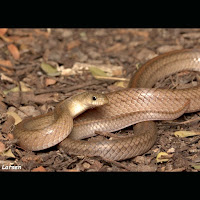 | ||||
| 3:08p | [Botany • 2016] Impatiens (Balsaminaceae) Species from Karst Limestone in Kelantan, Malaysia, including Three New Species
Abstract Peninsular Malaysian Impatiens foxworthyi M.R.Hend. is distinct from the Thai I. opinata Craib. Three new Impatiens species are described: Impatiens glaricola Kiew with purple flowers, Impatiens chikuensis Kiew with pale yellow flowers, and Impatiens vinosa Kiew with deep red flowers. While Impatiens foxworthyi is widespread on karst limestone in Kelantan and Pahang, the three new species are narrowly endemic to Kelantan limestone and are critically endangered. Keywords. Balsams, conservation assessments, Peninsular Malaysia 1. Impatiens chikuensis Kiew, sp. nov. Etymology. Named for the only locality from where it is known, viz. FELDA Chiku limestone 2. Impatiens foxworthyi M.R.Hend., Gard. Bull. Straits Settlem. 4: 50 (1927); Henderson, J. Malayan Branch Roy. Asiat. Soc. 17: 38 (1939); Henderson, Malayan Nat. J. 3: 35 (1948). – TYPE: Peninsular Malaysia, Pahang, Gua [Goa] Kechapi, February 1924 Md. Nur (with Foxworthy) SFN11912 (holotype SING). (Fig. 4) Impatiens opinata auct. non Craib: Shimizu, S.E. Asian Stud. 8(2): 216 (1970); Chin, Gard. Bull. Singapore 32: 96 (1979); Kiew, Malayan Naturalist 38(3): 33 (1985); Kiew in Henderson’s Malaysian Wild Fl. Dicot. 173 (2014). Etymology. F.W. Foxworthy (1877–1950), American forester and the first forest research officer (1918–1932) in Malaya. 3. Impatiens glaricola Kiew, sp. nov. Etymology. Latin, glara = scree + -icola = dwelling, from its habitat. 4. Impatiens vinosa Kiew, sp. nov. Etymology. Latin, vinosa = wine-red, referring to the flower colour. R. Kiew. 2016. Impatiens (Balsaminaceae) Species from Karst Limestone in Kelantan, Malaysia, including Three New Species. Gardens’ Bulletin Singapore. 68(2); 225–238. DOI: 10.3850/S2382581216000181 | ||||
| 4:32p | [Herpetology • 2017] Extension of the Geographical Distribution of Schneider’s Dwarf Caiman, Paleosuchus trigonatus (Schneider, 1801) (Crocodylia: Alligatoridae), in the Amazon–Cerrado Transition, Brazil
Abstract We present new records of occurrence of Schneider’s Dwarf Caiman, Paleosuchus trigonatus and extend its geographical distribution. Eight individuals were caught in the following locations: Sangue River, in the municipality of Campo Novo dos Parecis, Claro River and Marapi River, in the municipality of São José do Rio Claro, and tributaries of the Juruena River, in the state of Mato Grosso, Brazil. These records extend the geographical distribution of the species nearly 500 km south of the limit given in published range maps. Keywords: New records; conservation; Paleosuchus; Mato Grosso; Brazilian Amazon
Zilca Campos, Fábio Muniz and William E Magnusson. 2017. Extension of the Geographical Distribution of Schneider’s Dwarf Caiman, Paleosuchus trigonatus (Schneider, 1801) (Crocodylia: Alligatoridae), in the Amazon–Cerrado Transition, Brazil. Check List. 13(4); 91-94. DOI: 10.15560/13.4.91 |
| << Previous Day |
2017/07/15 [Calendar] |
Next Day >> |
